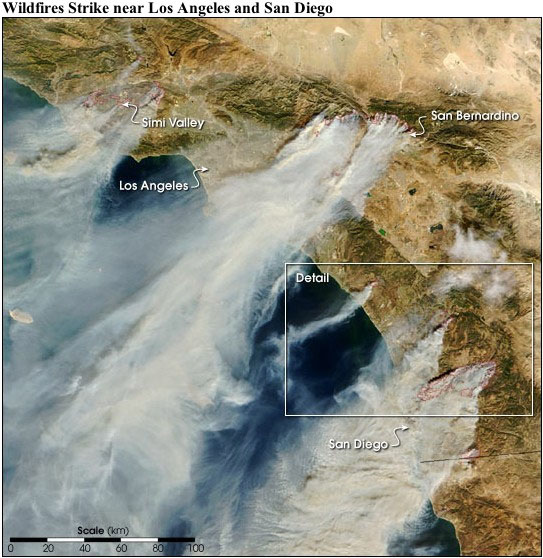Air Pollution
Can be broken down into outdoor and indoor pollution
First, we need a definition of air pollution – a pollutant is generally
considered
to be anything that isn’t desired. E.g., smoke, large amounts of
dust,
ozone are generally considered pollutants. Radon, perfumes,
noxious
odors can also be considered pollutants.
OUTDOOR AIR POLLUTION
- Primary - Dust, smoke particles, nitrogen, carbon etc.
- Secondary - Formed when primary pollutants react or combine with
one
another, or the basic elements.

Smog
- Photochemical smog - A mixture of primary and secondary
pollutants.
Forms when primary pollutants interact under the influence of sunlight.
- Industrial smog - Caused by burning coal and oil. Mainly a
problem
in countries with infant industrial programs.
- Vog – type of smog that forms by the interaction of volcanic
gasses
and the atmosphere in sunlight.
- Thermal Inversions
Acid Deposition
What is acid deposition? – SO2 and NOx gasses are
carried
aloft by wind and form secondary pollutants (acids), which are then
carried
back to earth in wet (snow, rain, fog) and dry (particulate) form.
Acid Deposition - harmful effects
Property / structural damage
Foliage damage
Weakened plant defenses
Contaminated water and damage to aquatic species
E.g., in December of 1952, five days with calm, foggy weather resulted
in
over 400 deaths attributed to the toxic gasses trapped by the
inversion.
Many of those gasses were acidic.
INDOOR AIR POLLUTION
- 1990 - EPA placed indoor air pollution at the top of the list of
18
sources of cancer risk (People spend 70-98% of time indoors)
- Cigarette smoking is the single most preventable cause of death
and
suffering among adults. Kills 8200 people/day - number is
expected
to triple by 2050.
- Sick Buildings - EPA states at least 1/5 of all buildings in US
are
"sick", i.e., that is they have poor indoor air quality.
- Sources of indoor air pollution include: volatile organic
compounds
(VOCs) that are degassing, smoke, poor ventilation, radon, ozone
produced
in electrical settings.
EFFECTS OF AIR POLLUTION ON LIVING ORGANISMS AND MATERIALS
- Damage to Human Health
- Prolonged Exposure - Prolonged exposure can lead to breakdown of
natural
defenses, leading to lung cancer, asthma, chronic bronchitis, and
emphysema.
- Deaths - US estimates of annual deaths = 7,000 -180,000. If
include
indoor air pollution, 150,000 - 350,000.
- Costs - According to EPA and American Lung Association, air
pollution
costs US minimum of $150 Billion annually in health care and lost
worker
productivity, with $100 Billion of that related to indoor air pollution.
Damage to Plants
- Chronic Exposure - Breaks down cuticle, thus leaving a plant less
able
to adapt to sudden changes in environmental conditions.
- Productivity - Overall productivity of European forests has been
reduced
by ~16%, mostly because of air pollution.
Damage to Aquatic Life
- Acid Shock - Caused by sudden runoff of large amounts of highly
acidic
water, either following heavy snowmelt, or when heavy rains follow a
prolonged
draught.
